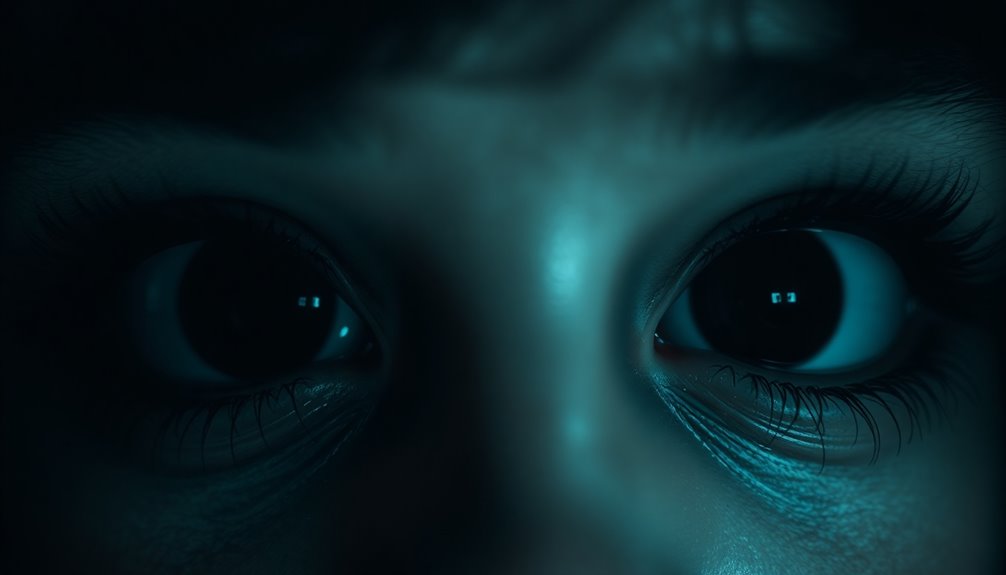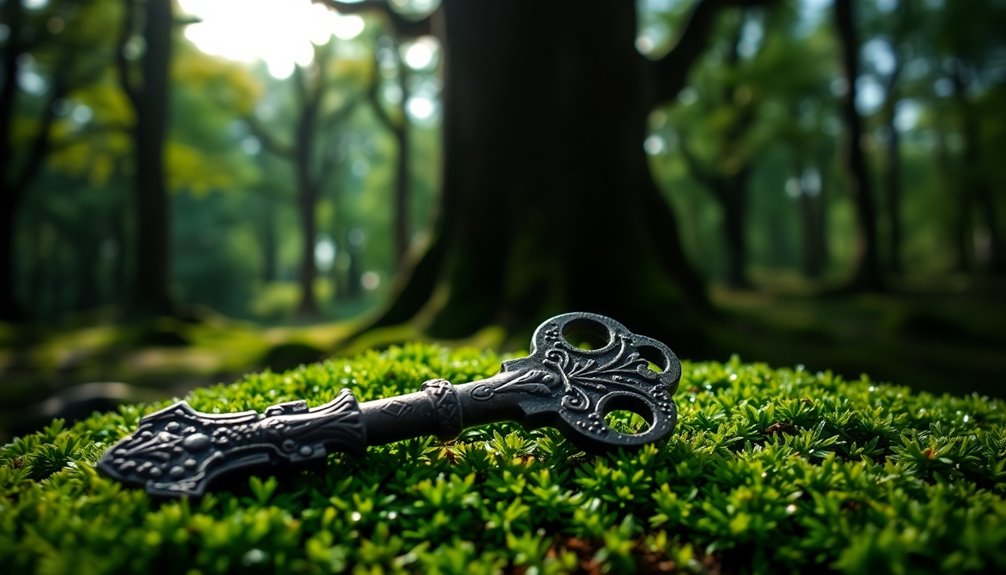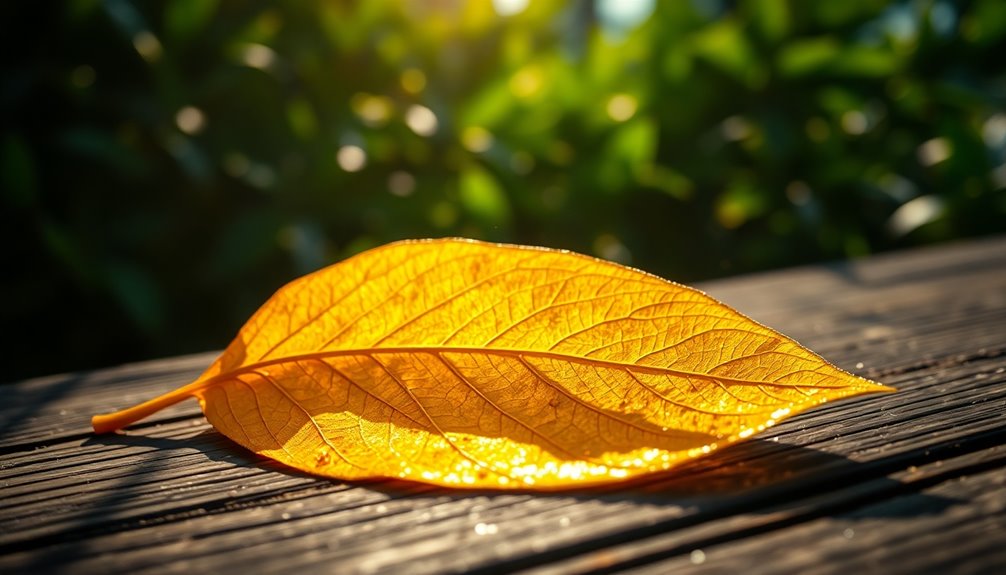Color symbolism is all about the meanings we attach to different colors. It helps you express feelings and ideas without using words. For example, red can mean love or excitement, while blue often represents calmness or trust. But colors can mean different things in various cultures! A color that symbolizes happiness in one place might signal sadness in another. This is why marketers pay close attention to how colors can affect our feelings and choices. Understanding color symbolism opens up a vibrant world of emotions and connections. Keep exploring, and you'll discover even more fascinating insights!
Key Takeaways
- Color symbolism refers to the meanings and emotions attributed to specific colors, influencing perceptions and interactions.
- Cultural variations significantly affect color associations, leading to different interpretations in art and daily life.
- Warm colors evoke excitement and energy, while cool colors promote calmness and tranquility.
- In marketing, color choices impact brand identity and consumer behavior, with different colors eliciting specific emotional responses.
- Colors can convey deeper meanings in art and literature, enhancing storytelling and emotional engagement.
Definition of Color Symbolism
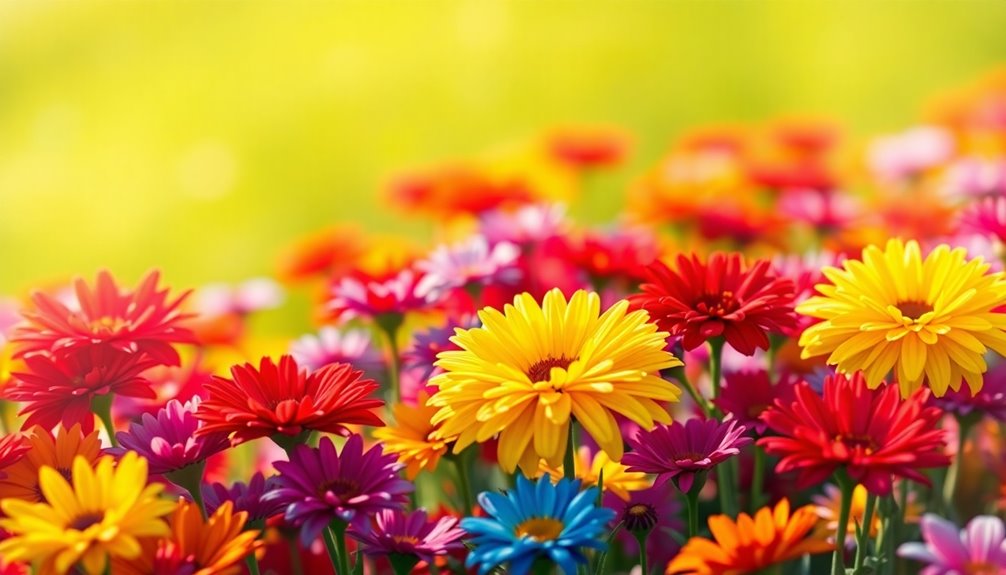
Color symbolism is the practice of attributing specific meanings and emotions to different colors, and it plays a significant role in how you perceive and interact with your environment. Each color can spark feelings and thoughts, influencing your reactions and choices.
For example, green often represents nature and growth, while blue is linked to trust and tranquility. These associations aren't the same everywhere; they can change among different cultures.
Understanding color symbolism is important because it helps you communicate feelings without words. Colors can have positive and negative connotations, making them powerful tools in areas like marketing and design.
When you learn about color psychology, you discover how primary colors, like red, blue, and yellow, can evoke excitement or calmness.
However, it's crucial to remember that color meanings can be subjective. What one person sees in a color might differ from someone else's view.
Emotional Impact of Colors

Colors really connect with our emotions in surprising ways!
For example, red can make your heart race with excitement or caution, while blue wraps you in calmness and trust.
Let's explore how color choices in different cultures and marketing can shape how we feel and think!
Color and Emotion Connection
When you encounter a vibrant hue or a muted shade, it's hard not to feel a shift in your emotions. Colors have a powerful way of affecting how you feel about the world around you. For example, red often stirs up passion and excitement, while blue can wrap you in a blanket of calmness.
Consider these connections between colors and emotions:
- Red: Passion and energy
- Green: Nature and balance
- Yellow: Happiness and optimism
Colors like green are linked to nature, promoting feelings of renewal. When you see green, it might remind you of fresh leaves and the beauty of growth.
On the other hand, black adds a touch of sophistication and power, while white brings a sense of purity and cleanliness.
These emotional impacts highlight the importance of color symbolism in our daily lives. Whether you're choosing a favorite outfit or decorating your room, remember how colors can influence your feelings.
Embrace the joy of colors and let them brighten your day!
Cultural Color Variations
Understanding how colors resonate differently across cultures can really open your eyes to the complexity of color symbolism. For instance, red symbolizes love and passion in Western cultures, but in Asia, it represents happiness and good fortune. Isn't that fascinating?
Green evokes nature and growth in the US, yet it can also suggest envy, showcasing the duality of color interpretations. When it comes to black, it often signifies elegance and sophistication in Western fashion, while in many other cultures, it's tied to mourning and sadness.
Now, let's talk about yellow. In Germany, yellow is associated with happiness and caution, but in other cultures, it can mean cowardice. Isn't it interesting how one color can have such different meanings?
Lastly, blue is commonly known for promoting calmness and trust, but its emotional responses to colors can change with cultural context. Each color tells a unique story based on where you're in the world.
Color in Marketing Strategies
In marketing, the emotional impact of colors can't be overstated; studies suggest that up to 90% of first impressions rely on color alone. Your color choices can shape consumer behavior and affect their feelings toward your brand. Understanding color symbolism is key!
Here are some important points about colors in marketing strategies:
- Blue: Evokes trust and reliability, making it a favorite for corporate branding.
- Red: Creates a sense of urgency and excitement, perfect for sales.
- Green: Represents health and sustainability, attracting eco-conscious shoppers.
Different cultures also perceive colors differently, so you need to be mindful of this. For example, while white symbolizes purity in some cultures, it can represent mourning in others.
By considering color perception, you can enhance your brand identity effectively.
Using the right colors can help make your marketing more powerful. They can grab attention, create feelings, and even influence decisions.
Cultural Variations in Color Meaning
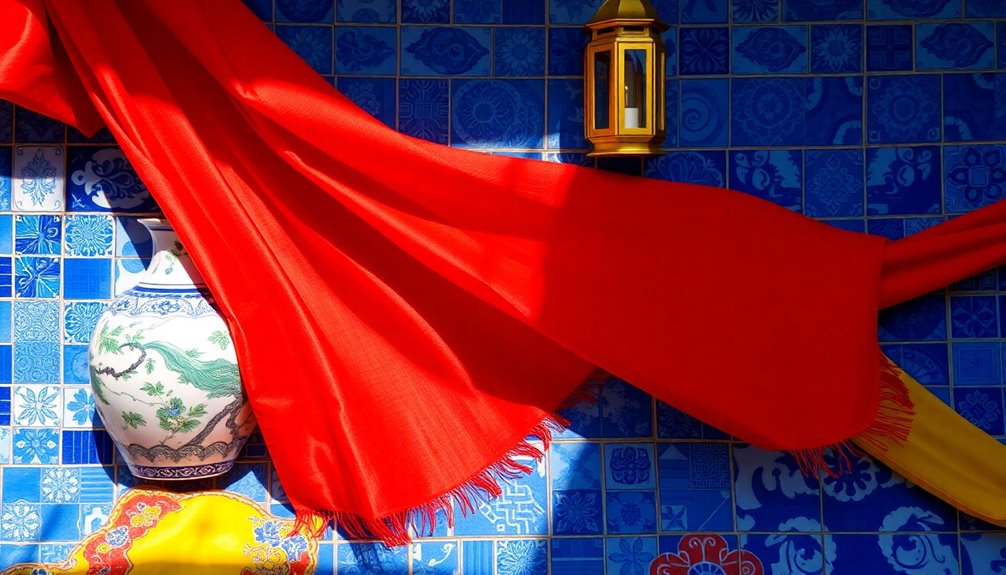
Across the globe, colors evoke a tapestry of meanings shaped by cultural contexts. You might be surprised to learn that color symbolism can change dramatically depending on where you are!
In Western cultures, red often symbolizes love and passion, while in many Eastern cultures, it represents happiness and good fortune. Isn't that fascinating?
When it comes to black, it's linked to mourning and sadness in the West, but white holds that meaning in some Eastern cultures.
Green is another color with different meanings; in the U.S., it's tied to nature and growth but can also mean envy. In other parts of the world, green symbolizes fertility and prosperity.
Yellow is bright and cheerful, conveying optimism and energy in many cultures, but in Germany, it can represent cowardice.
Finally, blue is usually associated with tranquility and trust everywhere, yet it can also mean sadness in English-speaking regions, as in the phrase "feeling blue."
These cultural interpretations show how color meanings aren't universal but rather shaped by cultural context. Isn't it amazing how subjective meaning can change the way we see the world?
Color Symbolism in Marketing
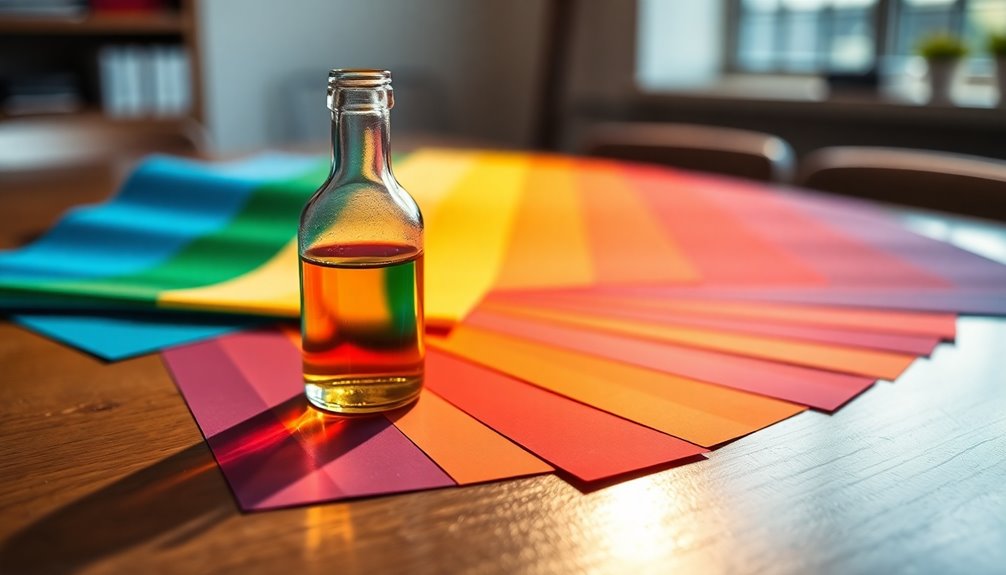
Colors can make or break a marketing strategy, influencing how consumers perceive a brand at first glance. You mightn't realize it, but color symbolism is a powerful tool in marketing. It shapes your emotions and guides your choices. When you see a brand, colors can spark trust, excitement, or urgency!
Here are some key points to reflect on:
- Color affects first impressions: 90% of these impressions are based on color alone.
- Colors boost brand recognition: Choosing the right color can increase recognition by up to 80%.
- Cultural meanings vary: White might mean purity in one place but sadness in another.
When brands understand color meanings, they can connect better with you and others in their target audience.
For example, blue often represents trust and reliability, while red can create a sense of urgency. By aligning their marketing strategies with these emotions, brands can enhance your experience and engagement.
Specific Color Associations
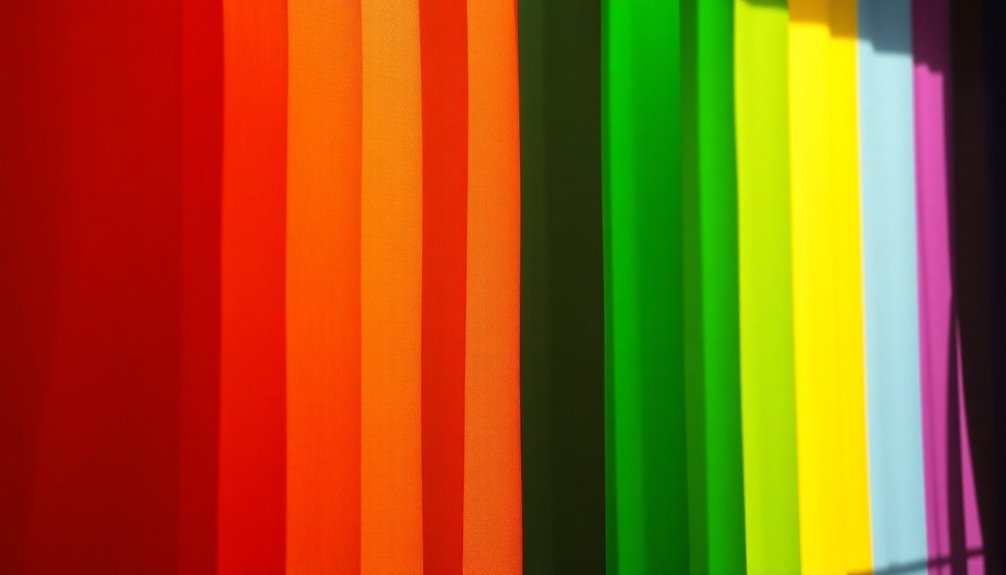
Let's explore how colors can tell us different stories!
Warm colors like red and yellow can spark feelings of love, energy, or even caution, while cool colors like blue and green bring calmness and a sense of nature.
Each hue carries its own unique meaning, making our world brighter and more exciting!
Warm Color Meanings
Warm colors, characterized by their vibrant and energetic hues, play a significant role in conveying emotions and messages across various contexts.
These colors, like red, orange, and yellow, can spark feelings of excitement and warmth. Let's explore what each of these warm colors means:
- Red: This color symbolizes love and passion. It can also signal danger! When you see red, it often makes your heart race and brings strong emotions to the surface.
- Orange: This lively hue represents creativity and enthusiasm. It brings a sense of warmth and positivity, making it perfect for brands that want to feel youthful and energetic.
- Yellow: Bright and cheerful, yellow is all about happiness and optimism. It catches your eye and stands out, which is why it's used in signs to grab attention.
Cultural interpretations of these warm colors can change, too.
For example, while red means love in many Western cultures, it symbolizes good fortune in China. Understanding color symbolism helps you appreciate the energy and emotions that warm colors can bring into your life!
Cool Color Associations
After exploring the vibrant meanings of warm colors, it's time to turn your attention to cool colors, which offer a different emotional palette.
Cool colors like blue, green, and purple bring a sense of calm and tranquility.
Let's start with blue. This calming color makes you feel relaxed and trustworthy. Light blue can refresh your spirit, while dark blue shows strength and reliability.
Next up is green. It represents nature, growth, and renewal. Bright greens can energize you, while dark greens symbolize stability and affluence.
Don't forget, though, that green can also hint at envy in certain situations.
Finally, there's purple. This color is often linked to royalty and luxury. It combines the energy of red and the calming vibes of blue.
Dark purple can signify wealth, while lighter shades encourage creativity and romance. Additionally, the calming influence of high vibrational energy can enhance your overall experience and emotional response to these colors.
Color Symbolism in Art and Literature

Color symbolism plays an essential role in both art and literature, enriching the viewer's or reader's experience through emotional resonance and thematic depth. When you look at a painting or read a story, colors can help you feel and understand what's happening.
Here are some exciting examples of color symbolism:
- Red often stands for passion or danger, stirring strong emotions.
- Blue can symbolize tranquility or sadness, creating a calm or reflective mood.
- Green might represent growth and hope, adding layers to character traits.
In art, Vincent van Gogh used swirling blues in *Starry Night* to show his feelings of turmoil and beauty.
In literature, think about the green light in *The Great Gatsby*, which symbolizes Gatsby's unreachable dreams. Colors can even foreshadow events, like the scarlet letter 'A' in *The Scarlet Letter*, which represents sin and judgment.
Cultural meanings also play a big part; for example, black can mean mourning in Western cultures, while white can symbolize purity in Eastern cultures.
All these colors help shape stories and emotions, making art and literature even more vibrant and engaging!
Resources for Further Learning
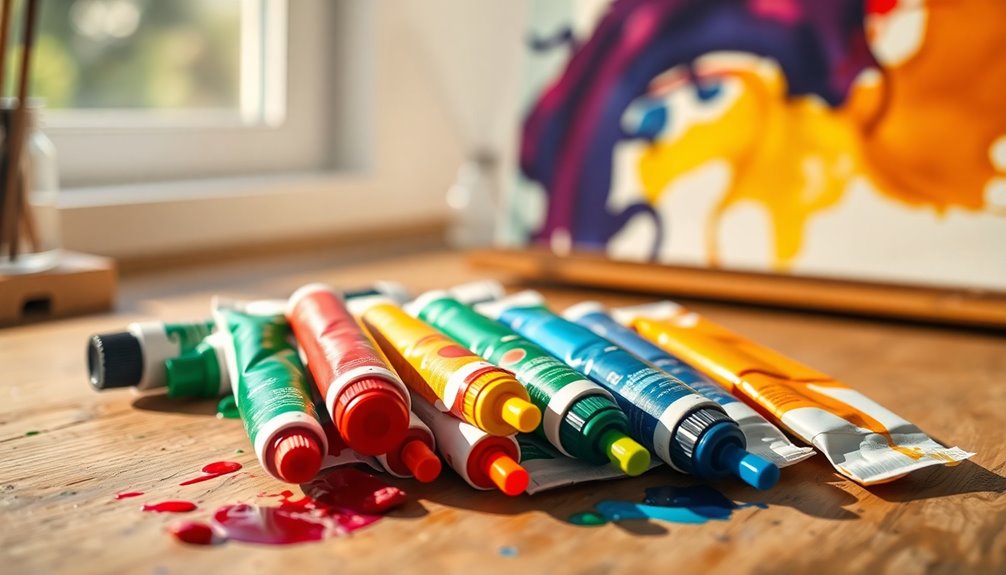
Exploring color symbolism can deepen your understanding of its impact in various fields. You can start by diving into visual design courses, which teach you how to use color effectively. These classes reveal the emotional impact and practical applications of color symbolism in design.
For a deeper look, check out the book "Secret Language of Color" by Joann and Arielle Eckstut. It explores color meanings and their psychological effects across different cultures. You'll find it fascinating!
Online resources, including articles and videos, explain how color choices influence branding and marketing. They show you how colors can sway consumer emotions and perceptions.
Plus, the Global Goals initiative uses a color-coded system to promote Sustainable Development Goals. This highlights the power of universally understood color meanings in communication.
If you're in creative fields like animation or media, expert insights and workshops from professionals like Jasmine Katatikarn can sharpen your skills in color symbolism.
With these learning resources, you'll discover the exciting world of color theory that can enhance your projects. So, get ready to explore, learn, and create with the magic of color!
Frequently Asked Questions
What Is the Symbolism of Color?
Colors can mean different things to people. For example, red often stands for love and excitement, while blue brings feelings of calmness and trust.
When you see bright colors, you might feel energized, but softer colors can make you feel relaxed. Each color can tell a story or create a mood.
Knowing what colors mean helps you understand how they can affect your feelings and even influence your choices every day!
What Is Color Symbolism in Literature?
Color symbolism in literature is super interesting! You might think it's just about pretty pictures, but it's so much more.
Authors use colors to show feelings and ideas. For example, a bright yellow can mean happiness, while dark blue might signal sadness.
When you read, look for these colors—they help you understand characters better and make stories come alive.
What Is the Significance of Color in Our Life?
Color plays a huge role in your life! It can lift your mood or calm you down. For instance, when you see bright yellow, it might make you feel happy and cheerful.
Colors can even help you make decisions, like choosing what to wear or what to buy. Plus, different cultures see colors in unique ways, adding even more meaning.
What Is an Example of Color Imagery?
Did you know that colors can affect your mood? For example, think about the color blue. When you see a bright blue sky, it can make you feel calm and happy.
In stories, authors use color imagery to create feelings too. Imagine a character standing under a deep blue sky, feeling peaceful after a tough day. This helps you picture their emotions, making the story even more colorful and exciting!
Conclusion
Color symbolism is all around us, influencing how we feel and see the world. Isn't it amazing how red can spark excitement while blue brings calm? Whether you're shopping, creating art, or just enjoying nature, understanding color meanings can add a whole new layer to your experiences. So, the next time you pick a color, think about what it represents! Immerse yourself in the colorful world of symbolism and let it brighten your day!


